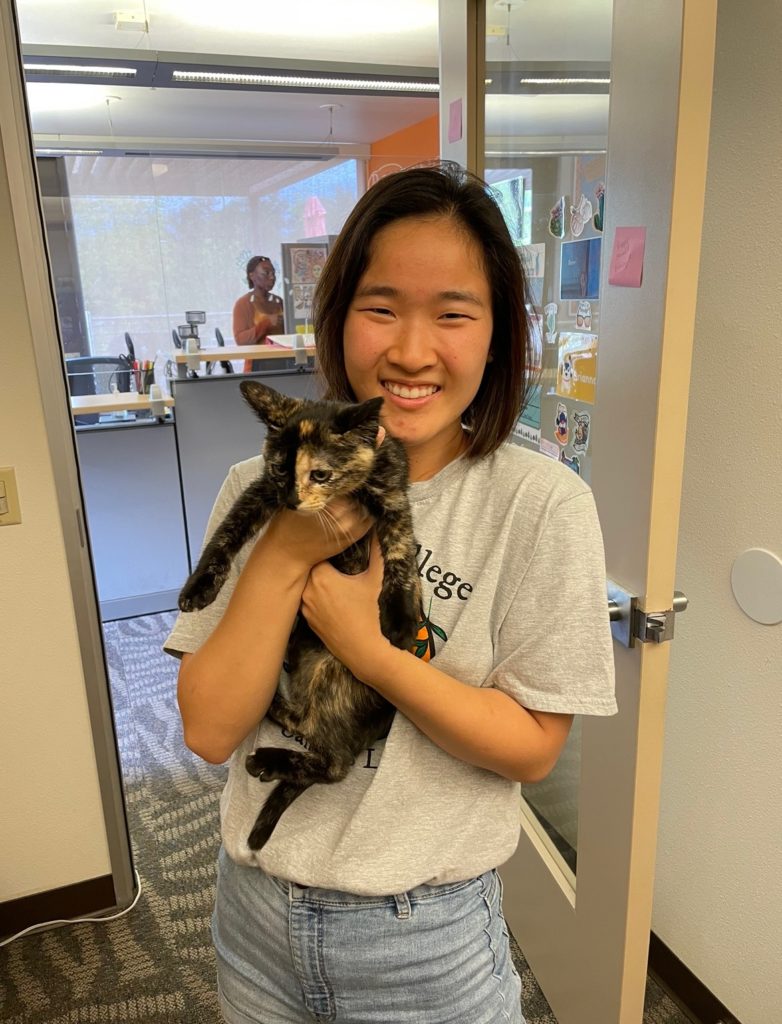The Social Responsibility Thesis Award was designed to support Pitzer Students completing their senior thesis/project/ Funding is awarded to students that can recount and provide the results of their community-based work in connection to their thesis/project. Community engagement internships and positions connected to the thesis/project should be conducted in a reciprocally beneficial manner for both the student and the organizations or groups involved.

Liam Davis-Bosch, PZ’ 24
Psychology
Body dissatisfaction is a prominent issue among college students. The negative correlates of body dissatisfaction range from psychological distress, developing eating disorders, and low self-esteem (You & Shin, 2016; Ousley et al., 2008; Tantleff-dunn &Thompson, 2000). However, much of these findings are derived from studies focusing on women, as body dissatisfaction is often treated as a woman issue with many fewer studies acknowledging that men also grapple with this problem. Additionally, for BIPOC men especially, the pressures associated with achieving a certain physique may be exacerbated by the internalization of Western appearance ideals. Thus, the purpose of this study is to explore the relationship between body dissatisfaction, self-esteem, and the internalization of Western appearance ideals among BIPOC and white men, and how race moderates that relationship. The study anticipates the following: (1) There will be a positive correlation between body dissatisfaction and the internalization of Western appearance ideals, which will be moderated by participant race such that the relationship will be stronger for BIPOC men than white men; (2) There will be a negative correlation between self- esteem and the internalization of Western appearance ideals, which will be moderated by participant race such that the relationship will be stronger for BIPOC men than white men.

Juliana Hwang, PZ ’23
Psychology and Sociology
Body dissatisfaction is a prominent issue among college students. The negative correlates of body dissatisfaction range from psychological distress, developing eating disorders, and low self-esteem (You & Shin, 2016; Ousley et al., 2008; Tantleff-dunn &Thompson, 2000). However, much of these findings are derived from studies focusing on women, as body dissatisfaction is often treated as a woman issue with many fewer studies acknowledging that men also grapple with this problem. Additionally, for BIPOC men especially, the pressures associated with achieving a certain physique may be exacerbated by the internalization of Western appearance ideals. Thus, the purpose of this study is to explore the relationship between body dissatisfaction, self-esteem, and the internalization of Western appearance ideals among BIPOC and white men, and how race moderates that relationship. The study anticipates the following: (1) There will be a positive correlation between body dissatisfaction and the internalization of Western appearance ideals, which will be moderated by participant race such that the relationship will be stronger for BIPOC men than white men; (2) There will be a negative correlation between self- esteem and the internalization of Western appearance ideals, which will be moderated by participant race such that the relationship will be stronger for BIPOC men than white men.

Hava Sprung, PZ’23
Psychology and Sociology
Hava’s senior independent research project studies the impact of teaching somatic-based social-emotional development and emotional regulation grounded in research and frameworks of trauma-informed and healing-centered education, restorative practices, transformative and healing justice, and the polyvagal theory of the nervous system. Hava is partnering with a Jumpstart preschool classroom to collaborate with the teacher to develop, facilitate, and assess a social-emotional learning 8-week curriculum that focuses on growing our relationship with our bodies and the wisdom they hold about our emotions. Jumpstart is a national organization supporting preschools that serve resource-denied communities through bringing college students into classrooms. The anticipated outcome of this project is students feeling safer in the classroom, better able to regulate their emotions, and in stronger relationships with each other. Hava hopes that her research will encourage early-childhood educators to incorporate somatic-based social-emotional learning into their curriculum and classrooms, with an understanding of the impact and importance of this work on a micro as well as macro scale.